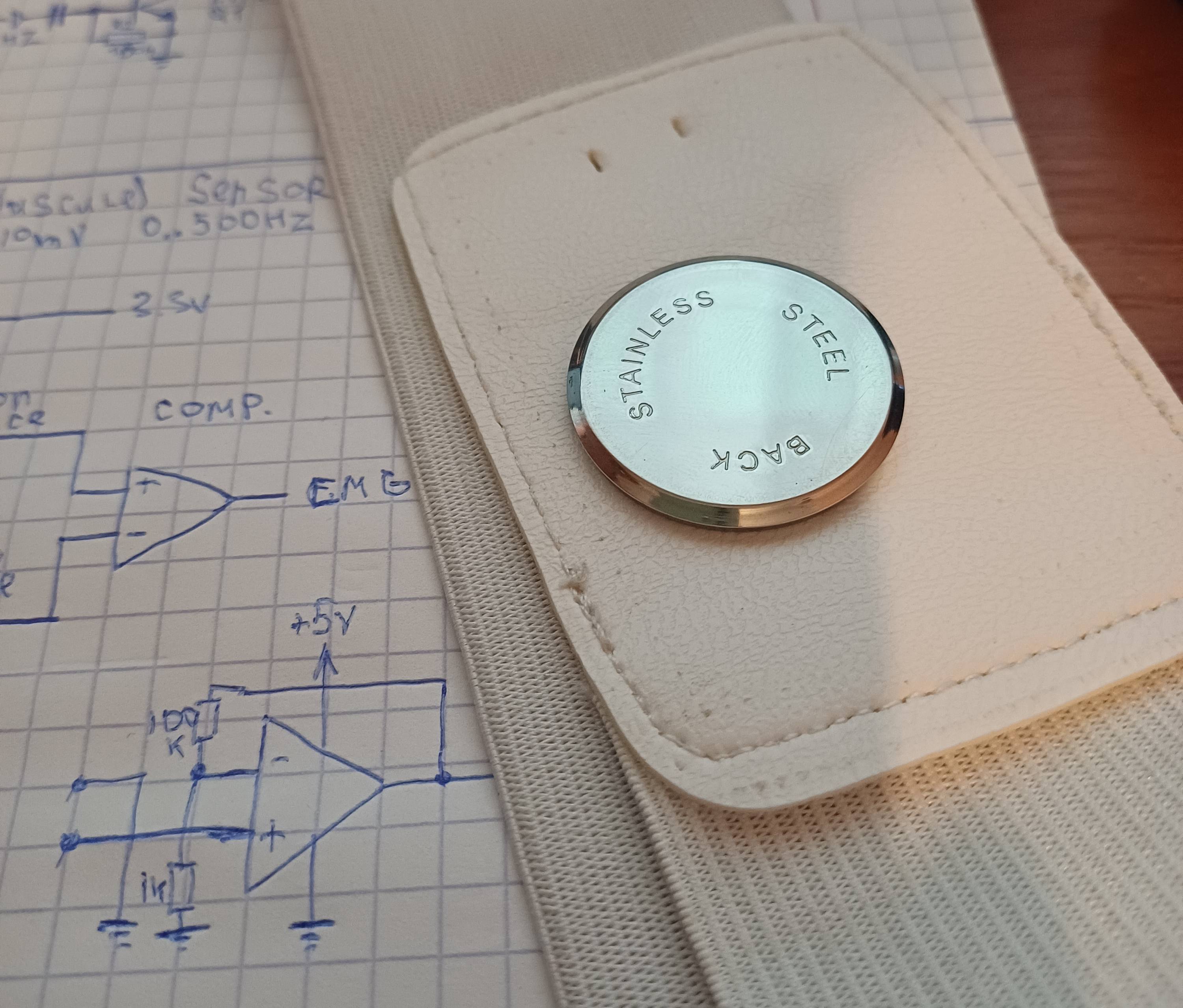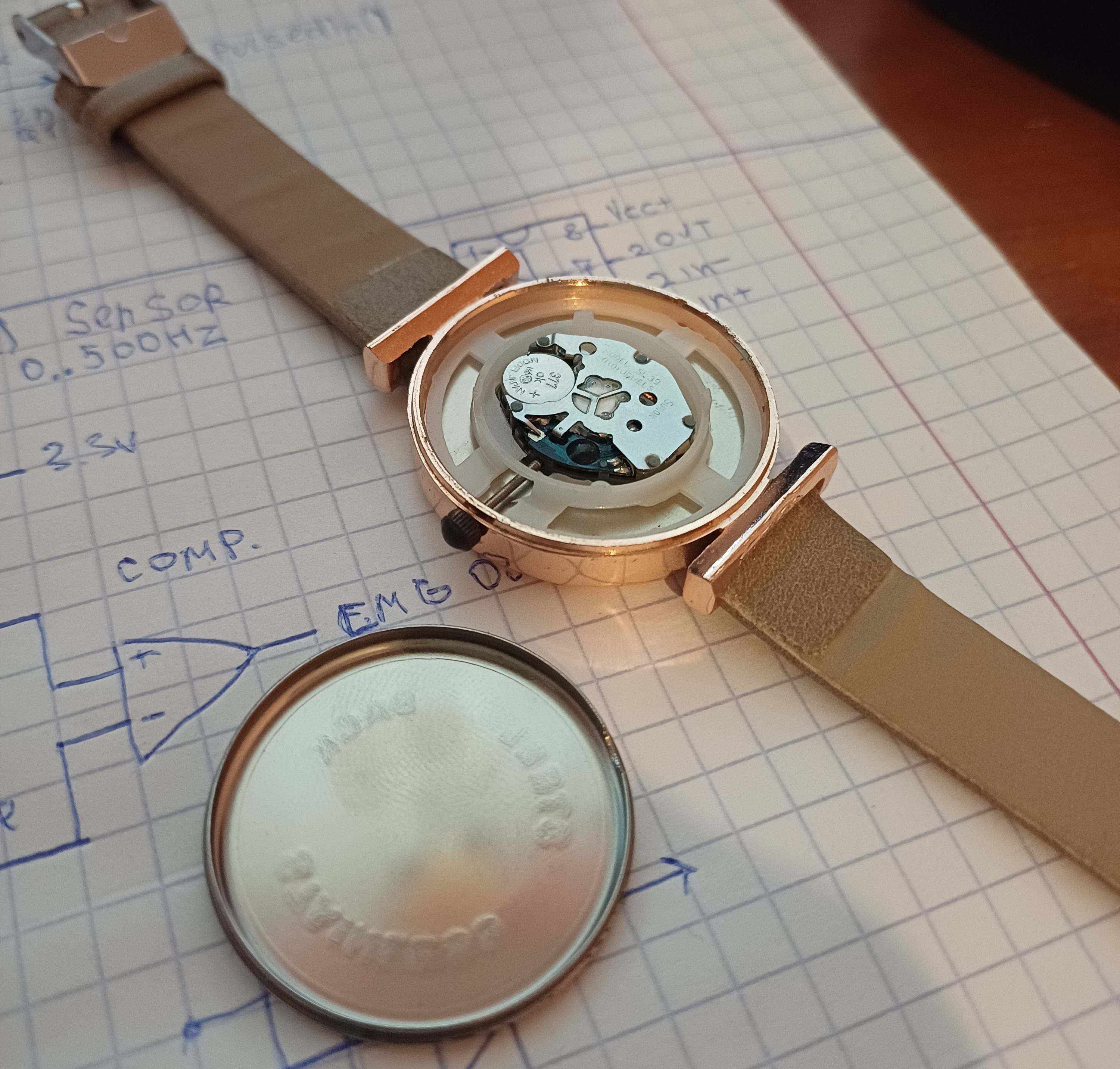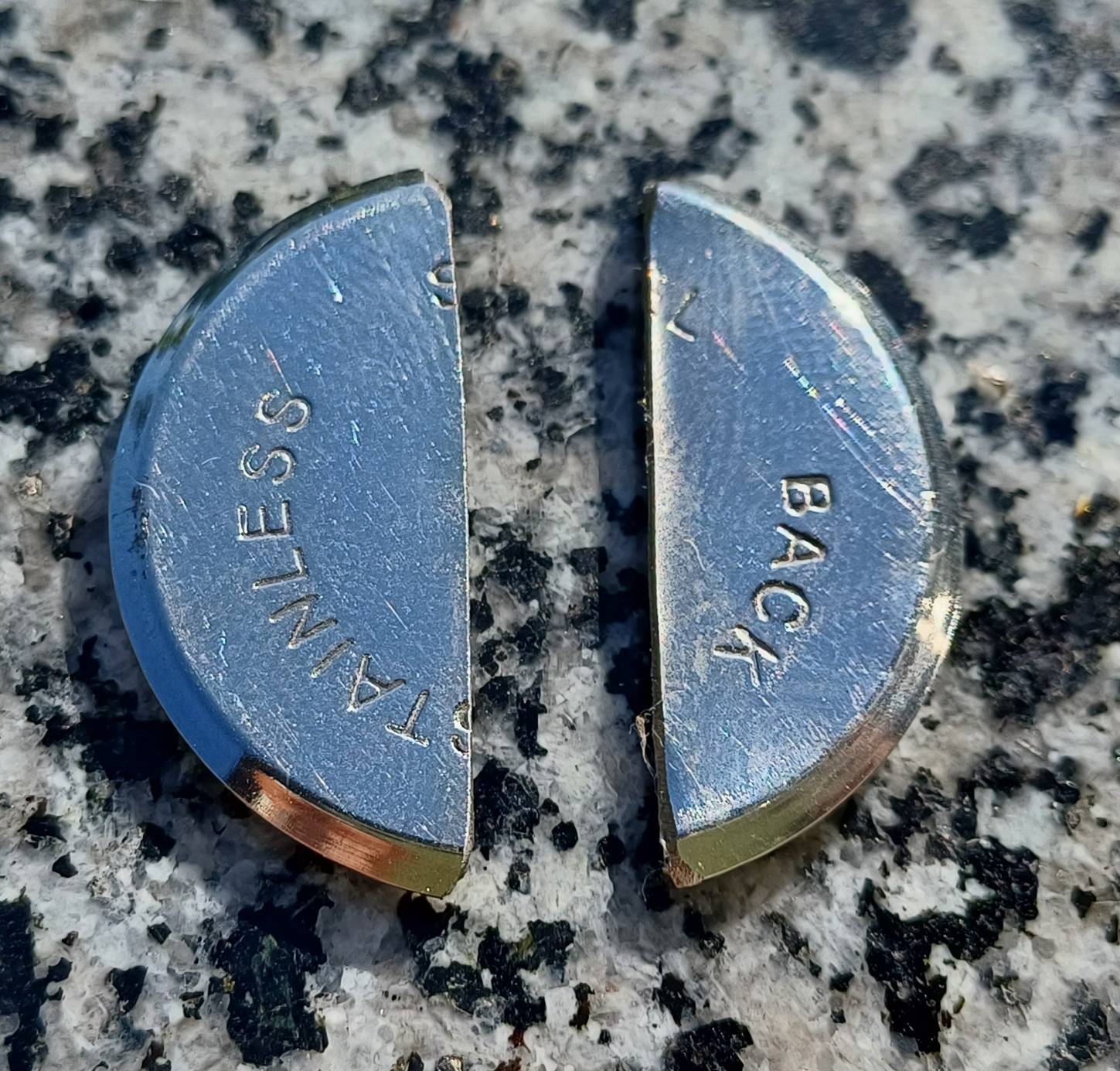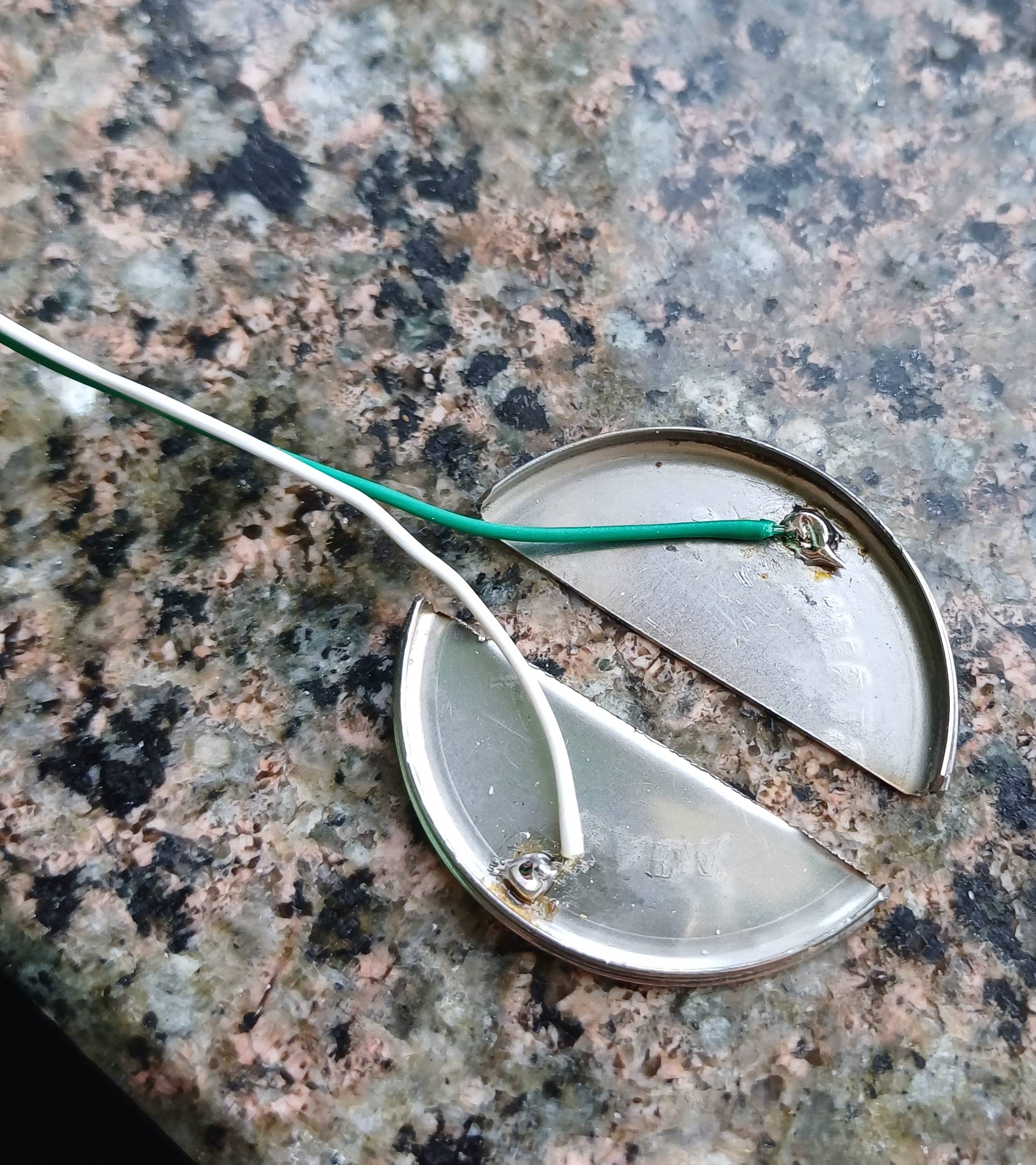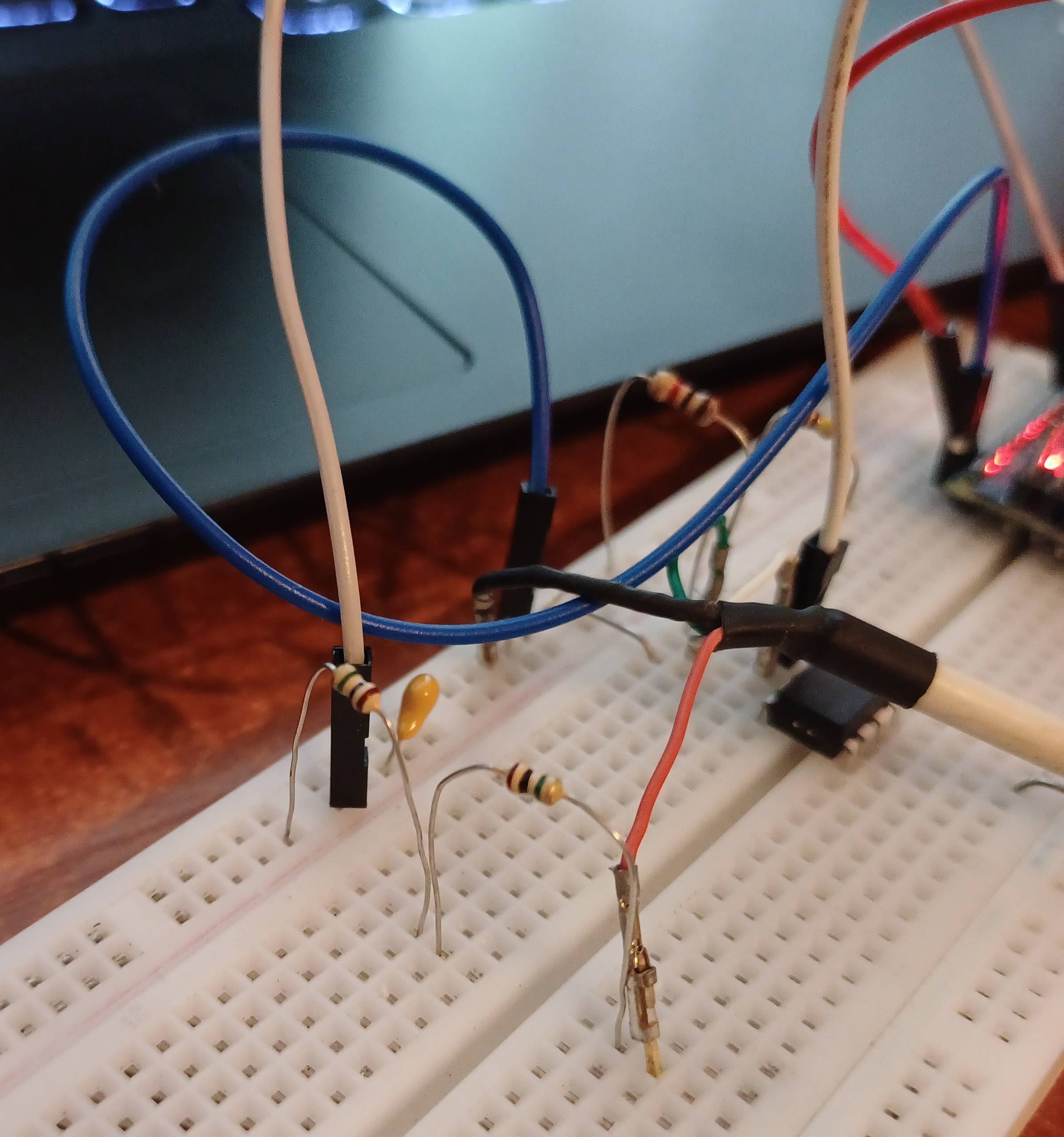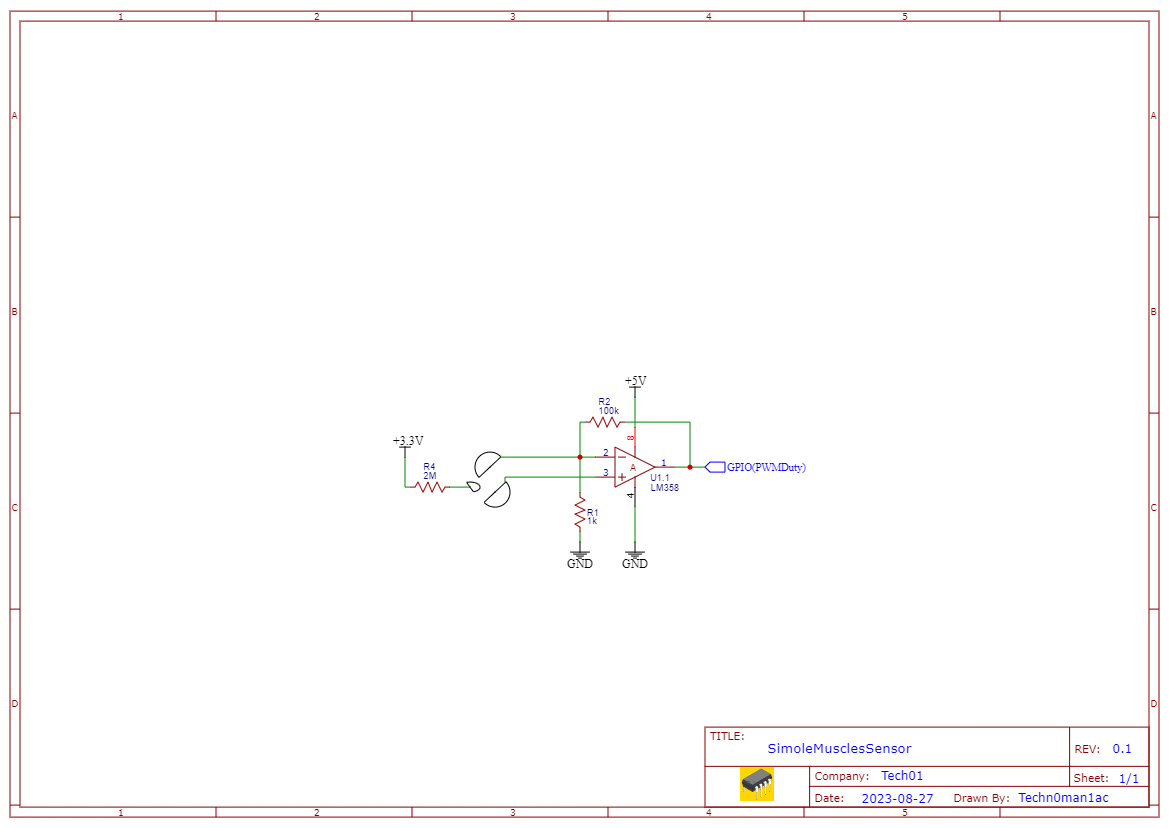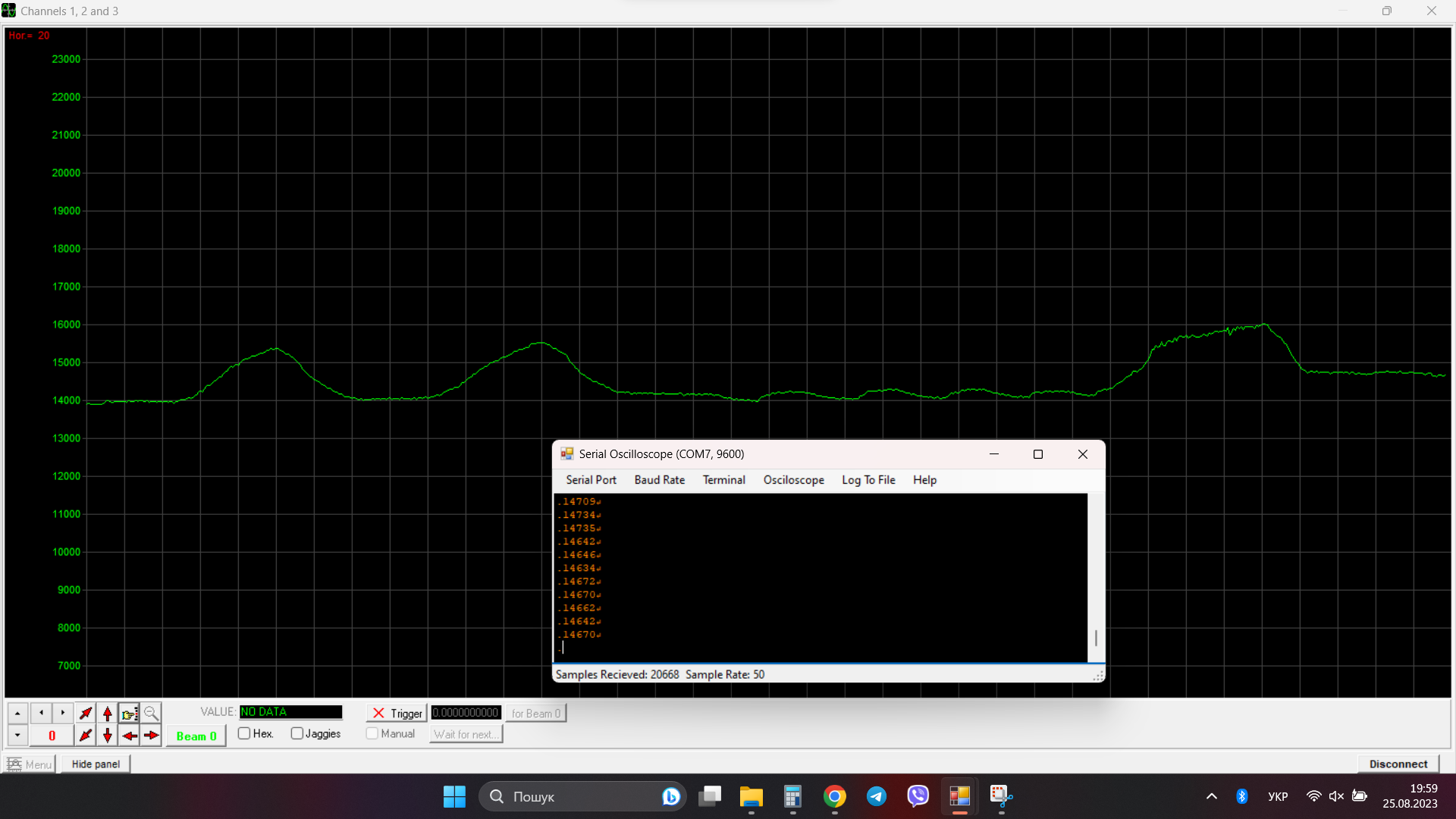WARNING! I, as the author, do not bear any responsibility for your actions, since it is physical contact(body contact) with the USB power bus, there is a possibility of getting a network potential of 230 V. Observe all safety measures.
This is a simple muscle activity sensor, that works on the capacitive principle.
Video demonstration:
https://www.youtube.com/shorts/VuWuCSAJUlg
I made the electrodes of the sensor from stainless steel (the back cover of the wristwatch). Ideally, it should be "medical steel" (or simply stainless steel ;) ).
I sawed it for two identical parts in the shape of a crescent.
Stainless steel itself does not solder with solder, so I had to use acid, and then wash it well with alcohol, still this part is in contact with my skin. The whole process took 40 minutes.
Next, I glued it to a rubber belt with dermantin in the middle with hot glue, put it on a fluffy zipper (they are called "Velcro" in the people) for convenient putting on and removing the sensor. In the photo, there are 3 contacts, left (IN-), right (IN+) and below reference (3.3V).
This is a very simple sensor of muscle activity based on a general-purpose operational amplifier LM358N, three electrodes are used (IN-, IN+ and 3.3V reference, connected through a series-connected resistor with a rating of 2 MΩ), the OP is connected according to the negative feedback loop scheme and has a gain of 1 to 110.
Always actual circuitry is here:
https://oshwlab.com/raznie.podelki/simplemusclessensor
The principle of operation of the sensor is very simple - if you make contact with the skin, the operational amplifier start oscillations and generating pulses with a frequency of 230 V network (i.e. 50 Hz), and as the contacts are pressed against the skin, the duty cycle decreases, this is detected using the pulseIn() function:
https://www.arduino.cc/reference/en/language/functions/advanced-io/pulsein/
Very important - learn how to achieve the maximum sensitivity of the sensor and you need data visualization, I used an open source project called "Serial-Oscilloscope":
Project link:


